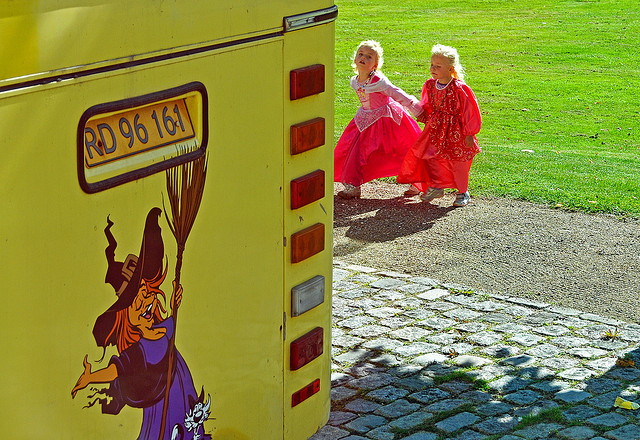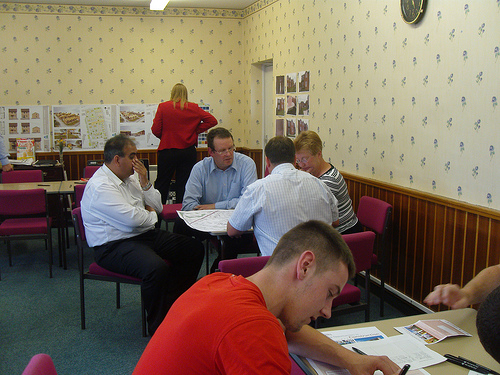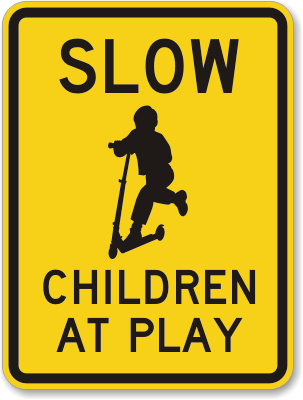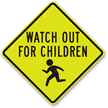Child pedestrian tragedies are close to home
Home should be where kids are the safest, not the most susceptible to danger. When 70% of children hurt or killed by cars are hit several blocks from their own homes, it’s time to elevate safety efforts in neighborhood and residential areas. Some safety messages can blend ineffectually into the background, but it’s been proven that children are 50% less likely to be hit and injured by cars in a neighborhood with traffic-calming devices (devices used to slow down traffic).
Statistics emphasize how alarming the problem is:
- Motor vehicle crashes were the leading cause of death for children in the U.S. aged 4 and ages 11 to 14.
- In 2010, an average of 3 children aged 14 and younger were killed and 469 were injured every day.
- In 2010, 83% of the pedestrian fatalities among the 14-and-younger age group happened in areas that weren’t intersections. That’s a substantial increase from 73% in 2009.
When are kids the most at risk? Studies say that children are more likely to be struck in an urban area on a residential street in the late afternoon or early evening. Children engage in risky behavior by darting out mid-block, dashing across intersections, and getting down from buses without looking for traffic.

Children are prone to accidents when they leave buses.
Kids of preschool age (ages 3-4 years) and younger elementary schoolchildren (ages 5-9) are most often struck as they enter the roadway at mid-block. This age group is at risk because their knowledge and key perceptual skills concerning traffic have not developed. The age group that has the largest number of pedestrian injuries is toddlers aged 1-2, and they are the most likely group to be injured in a non-traffic location, especially driveway backovers. Toddlers’ inexperience and small sizes are factors that make them susceptible to injury via car.

A neighborhood meeting to discuss driving and pedestrian safety can unite a community against tragedy.
So how can we stop child pedestrians from getting injured or worse? Two methods are either modifying their behavior or their environment. One method is to provide engaging educational methods. Examples include:
- Neighborhood meetings: Try out a neighborhood meeting to discuss the problem and work out ways for drivers to reduce speeds and increase safety. Mention that backovers are a leading cause of toddler deaths and urge drivers to make sure no one is behind their car before backing up.
- A neighborhood pledge: get neighbors to commit to signing a pledge to drive the speed limit.
While education is cost-effective and interactive, municipalities do often find that creating traffic-calming initiatives have a more pronounced effect. One study conducted by the American Journal of Public Health said that speed regulators allowed a 53% to 60% reduction in the odds of injury or death among children struck by an automobile in their neighborhood. Signs and markings can be used as traffic calming measures that can monitor traffic movements.
One tragic but inspirational story happened in Smithfield, Utah, on one of the town’s roads, Summit Drive. Over 28 children live on the road. A 5-year-old boy who was riding his bike on Summit Drive was struck and killed. As a result, many of the residents were inspired to purchase speed limit and child at play signs and placed them on flower beds.
“We got together as a neighborhood and decided we wanted to bring awareness,” said Smithfield Resident Terri Archibald. “A lot of people don’t realize it’s only 15 mph, and we want people to be aware and slow down. Our kids run back a lot, and we don’t want them to get hit.”
Signs and other traffic-calming measures leveraged in conjunction with new city policies could drastically reduce the number of tragedies.

Children at Play Signs will alert drivers to kids playing in the street.















